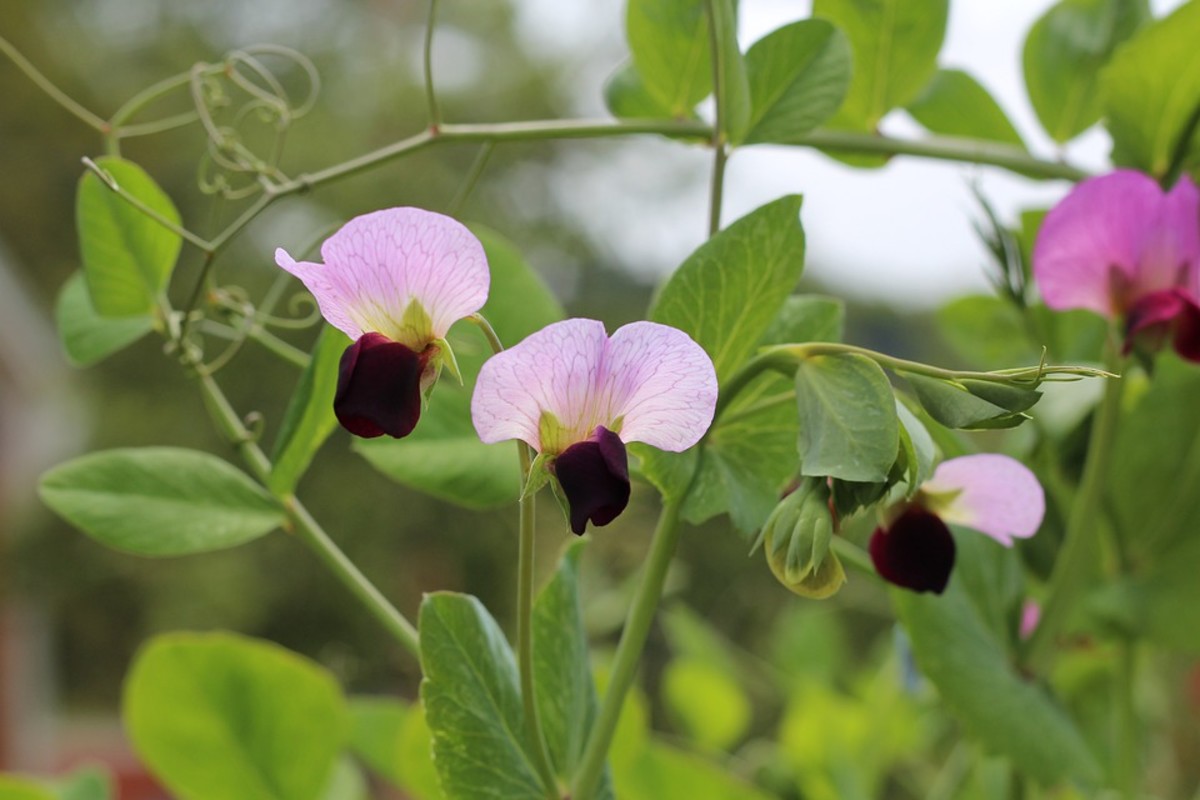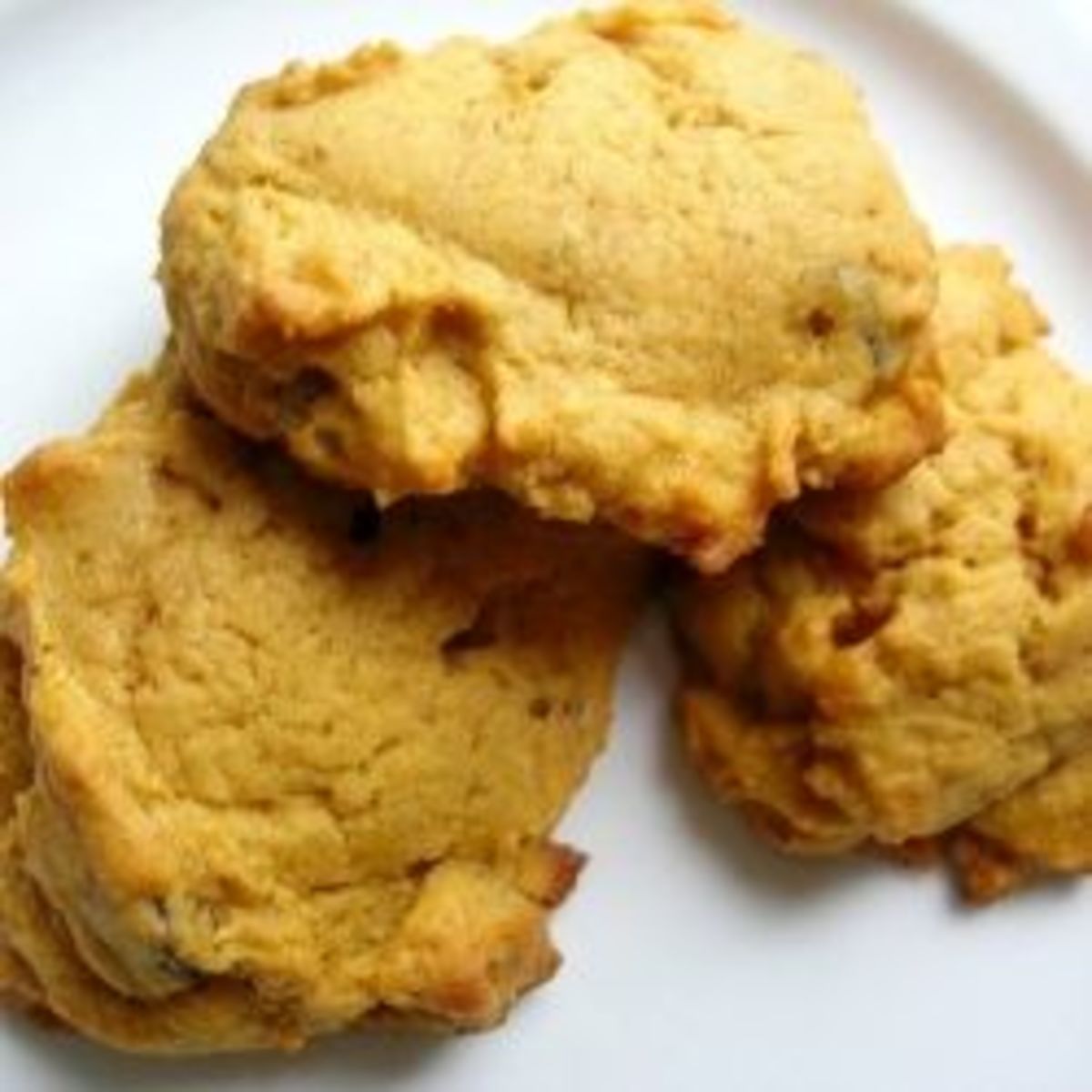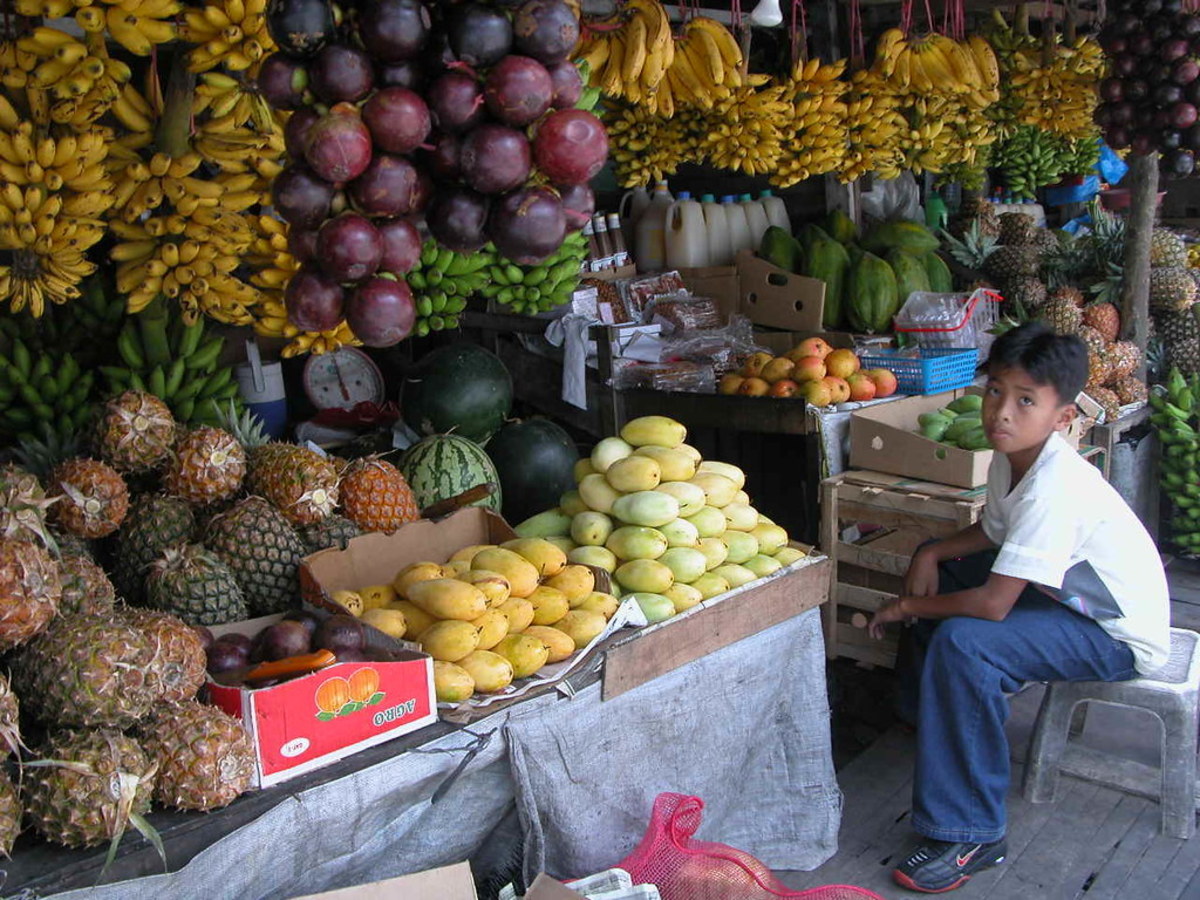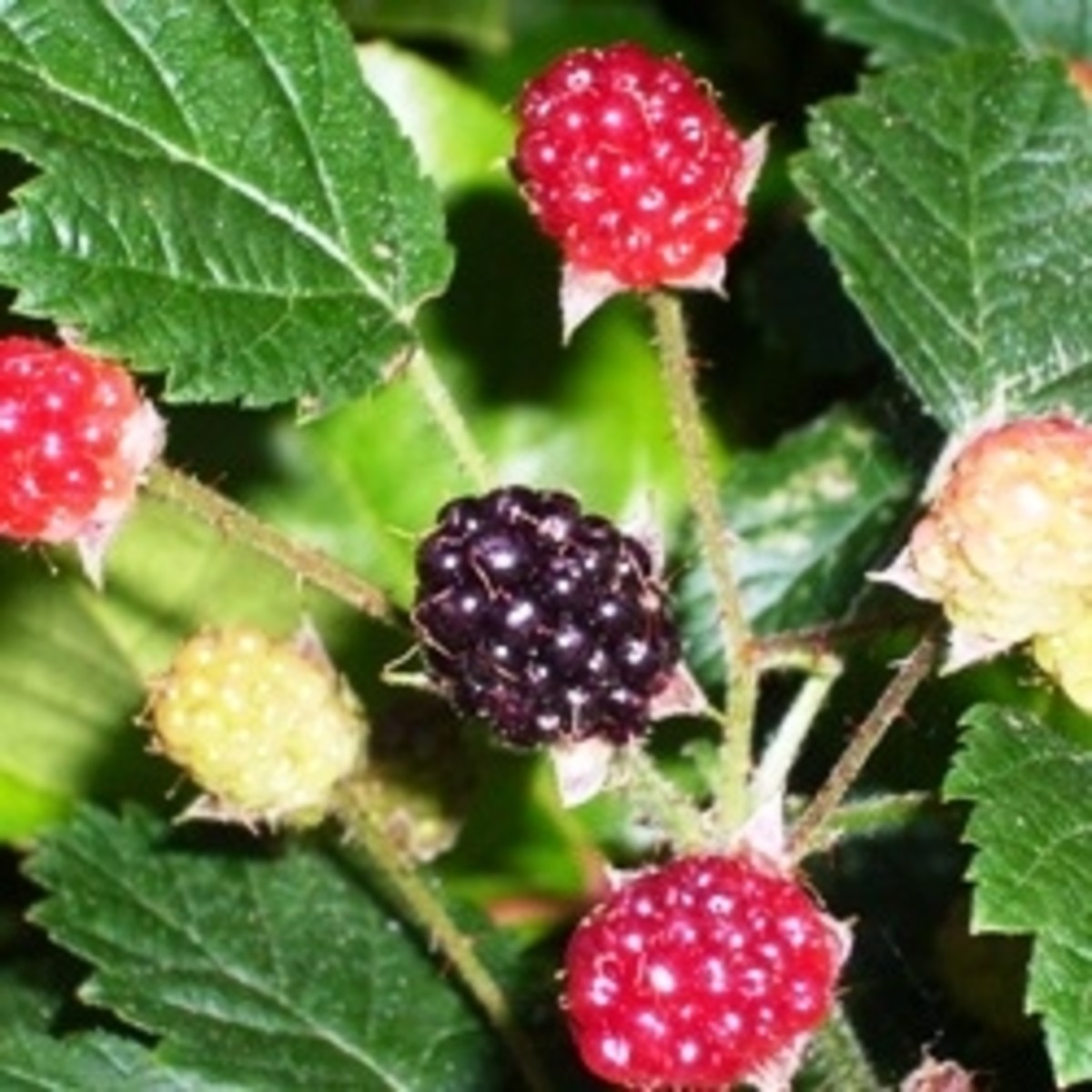- HubPages»
- Food and Cooking»
- Cooking Ingredients»
- Fruit Ingredients
Pumpkin - How to Work with Fresh Pumpkins
Sugar Pie Pumpkins
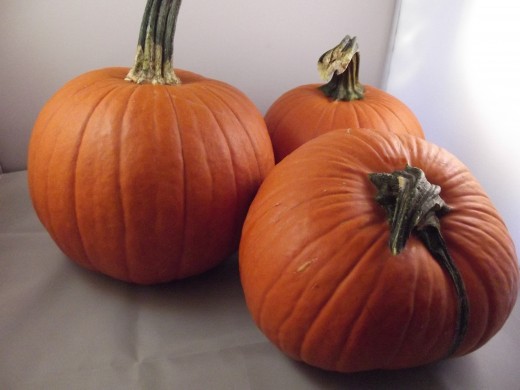
Pumpkins rock. Gorgeous, delicious and easy to use, they contain a nutritional punch that is hard to beat. Absolutely saturated with beta carotene and antioxidants, they also carry protein, calcium, potassium, magnesium, iron and Vitamin C - among others.
Most of the time our only option for working with pumpkin is buying it in a can. But when fall hits and they're fresh, they are abundant and inexpensive as well. Almost every speck of the pumpkin is edible, although the leaves and shell are only so in the very immature, young ones. Still, the flesh and seeds carry dynamite flavor along with all those nutrients, and it's extremely easy to work with.
Look for brightly colored pumpkins that are heavy for their size. Be sure to also purchase the ones labeled as 'pie' or 'sugar' pumpkins - there are all kings of varieties that count as pie pumpkins with lots of names - but almost always they'll be labeled as pie pumpkins. The varieties that are used as Jack O'Lanterns are edible, but they contain a lot more water than the pie pumpkins making them more difficult to work with. Decorative pumpkins have been bred for appearance - not taste or nutrition. Results will be much better with the right veggie. I have known plenty of people who grated the pumpkin that was cut or carved when they made Jack O'Lanterns and had success though. Gotta love not wasting a scrap!
Pumpkin Guts - ewwww!

Cut it in half, scoop out the guts...
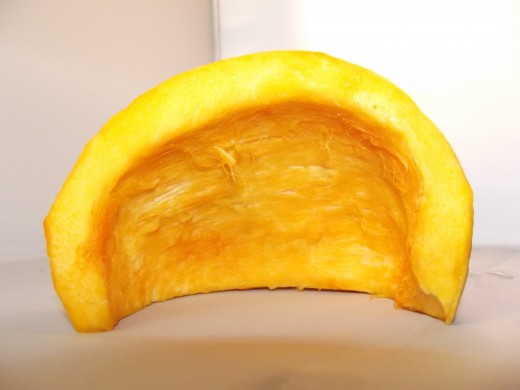
And place face down in a dish.
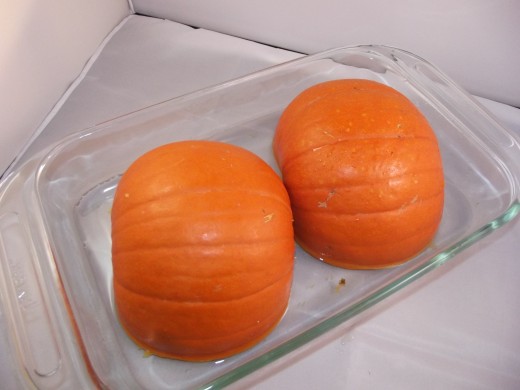
The first step in working with a fresh pumpkin is to clean it - exactly as you would if you're carving it. Of course in this case you can simply cut in in half or quarters before scraping out the seeds and the pumpkin guts. Save those seeds though! Roasted pumpkins seeds not only contain great nutritional value themselves, but they are a great treat. Yummy! Set them aside in a colander while you prep the rest. And yes - pumpkin guts are just as icky as you remember - but persevere. The results will be worth it.
Depending on how to want to use it, pumpkin can be steamed, boiled, baked, roasted, chopped or grated. Perhaps the most useful way is to bake it, then puree it. It can be canned or frozen that way, and seems to be the form most recipes use. If you need to prep it before you use it, then do it this way, and stash it in the freezer.
So - cut your pumpkin, scoop the insides and place it cut side down in a casserole. Add about half an inch of water - not too much (you'll get rid of it later). Place the casserole in a 350F oven for between 30-40 minutes or until fork tender. The time it takes can change based on the size of the pumpkin - larger pumpkins will of course take longer. But different types also differ in the thickness of their flesh and rind, so keep on eye on it. A fork should go right on through when it's done.
Remove the pumpkin from the oven, remove from the casserole and set it on a cutting board to cool until it's all right to handle. The flesh of the pumpkin will be super easy to scoop right out - sometimes it just falls out when I pick mine up. Drop it into a blender or food processor and process until very, very smooth.That's the puree part.
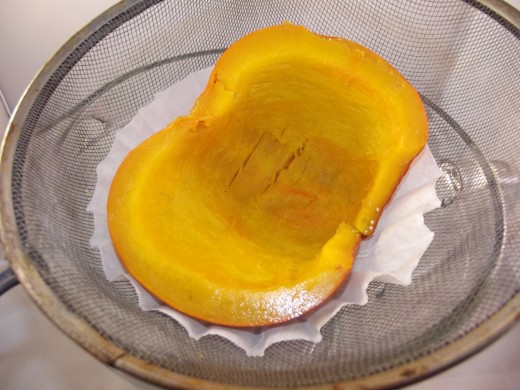
If you want to, you could skip the puree part, but in the next step you'll get far more liquid out of the pumpkin if it's been pureed. If you're going to use the pumpkin in baked goods or as a stand alone dish, you probably don't want to skip it. If you're going to use it in soups or stews then it's not necessary, although the texture won't be as silky.
For dishes where the control of moisture is key - as in custards, cheescakes, breads and muffins, or pies, then the next and final step is to get rid of as much excess moisture as possible. It's super simple - just suspend a wire strainer over a bowl, place a coffee filter in the strainer, and plop the pumpkin right into the top. In the picture I skipped the puree, and scooped the cooked and cooled pumpkin right into the filter. Allow this to sit for several hours - you'll be surprised at the amount of water that is released. Once it has drained, you'll have satiny smooth pumpkin ready to pop into any recipe you choose.
A quick side note - because there is so much nutritional value to pumpkin, I save the water that drains off. Freeze it into ice cubes, and toss one into any dish in place of a bit of water - into rice, stews or soups. The flavor is extremely mild, and almost never gets noticed, but it does help squeeze every last nutrient out of your food.
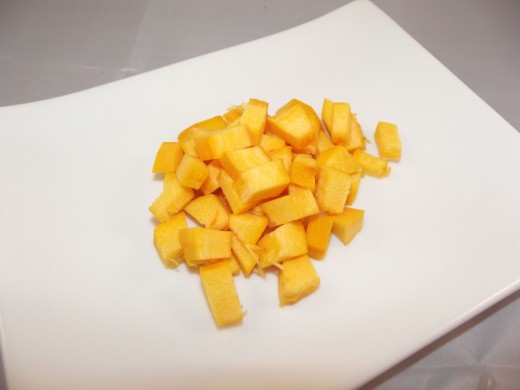
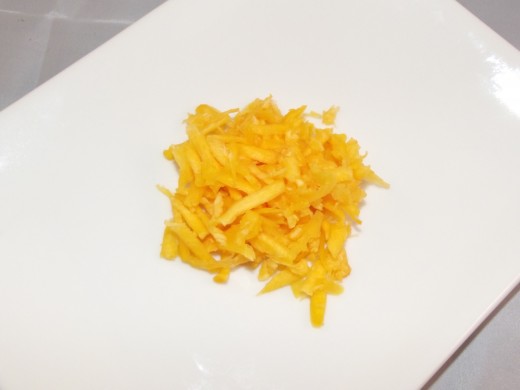
The Good Stuff:
One cup of cooked mashed pumpkin contains:
Minerals Calcium, Ca mg 37, Iron, Fe mg 1.40, Magnesium, Mg mg 22, Phosphorus, P mg 74, Potassium, K mg 564, Sodium, Na mg 2, Zinc, Zn mg 0.56, Copper, Cu mg 0.223, Manganese, Mn mg 0.218, Selenium, Se µg 0.5
Vitamins Vitamin C, total ascorbic acid mg 11.5, Thiaminm g 0.076, Riboflavin mg 0.191, Niacin mg 1.012, Pantothenic acid mg 0.492, Vitamin B-6 mg 0.108, Folate, total µg 22, Folate, food µg 22, Folate, DFEµg_DFE22, Choline, total mg 15.2, Carotene, beta µg 5135, Carotene, alpha µg853, Cryptoxanthin, betaµg3552, Vitamin A, IUIU 12230, Lutein + zeaxanthin µg 2484, Vitamin E (alpha-tocopherol) mg 1.96, Vitamin K (phylloquinone) µg 2.0
Other options!
Don't want to mess with baking and straining the pumpkin? Then don't. You have lots of other options. Pumpkin can certainly be used much like carrots. Once peeled (just use a vegetable peeler) and the rind discarded, then chop the pumpkin into whichever size dice you need. This is the best way to use it for many soups and stews, some risotto recipes, and if you wish to roast it.
Try dicing pumpkin and potatoes both, drizzle with olive oil, kosher salt and rosemary and roast in a 400F until tender. If you do this, start the potatoes 15 minutes before the pumpkin to maintain texture - the potatoes need longer to cook.
Alternately, you can peel pumpkin and grate it using a hand grater or the grating attachment of your food processor. This can be used in any recipe for baked goods calling for carrots as a full or partial replacement. If you wish to swap out pumpkin puree in a recipe for fresh gtated pumpkin, then use about 1/4 more grated pumpkin than puree to account for the moisture difference.
Finally, don't forget the pumpkin seeds. Not only are they delicious, they are loaded with nutrients and fiber, so it's a win/win situation. I love to roast them off (or any winter squash seed - they all work), throw them in a bowl and leave it on the corner of my kitchen table. All of the children grab a few as they pass by, and it never takes long until they are gone. The easiest way is to rinse and dry the seeds, then throw them on a baking sheet. Add a couple tablespoons of butter and kosher salt and pepper. Garlic salt is also wonderful. Roast the seeds at 350F for about 30 minutes or until golden brown and the fragrance is nice and nutty. Stir the seeds a couple times while they're baking and they'll cook and brown the most evenly.
Please visit the website!
- The Thrillbilly Gourmet
Combining classic technique with everyday food for spectacular results.




